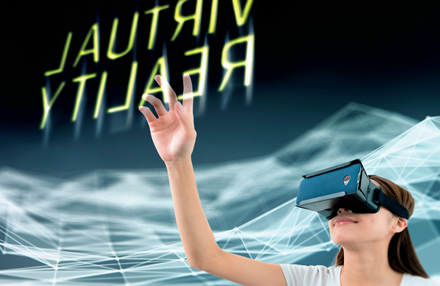Magazine: Fall 2015 | Volume 22, No. 1

Virtual Reality (VR) opens up an immense space where computer science dives in; this special issue will be an eye-opener for emerging computer science students who are considering the world of VR; either as recent graduates ready to join the bubbling industry (think Valve, HTC, Samsung, Sony, Microsoft, Facebook, and Google), or as researchers looking to connect with fellow academics who research novel ways of experiencing VR. Within these pages, XRDS shines light on both sides of the coin.
Download
- Digital Edition web-based magazine available for subscribers – sign in
- PDF via ACM’s Digital Library
DEPARTMENT: Updates
Excellence around the world
This year's ACM award winners share how their chapters came out on top.
By Claudia Schulz
SECTION: Features
One step beyond virtual reality
We have come a long way since the late 1970s, when virtual reality technology was in its infancy. With an array of new VR technologies in the market, what might be the future impact on our daily lives?
By Diego Martinez Plasencia
Substitutional reality
Now that virtual reality headsets are finally reaching the wider consumer market, how can we merge the physical and virtual worlds to create a unified multi-sensory experience?
By Adalberto L. Simeone, Eduardo Velloso
Using your own muscles
Leveraging the user's own muscles to simulate impact and forces from a virtual reality world allows us to create more immersive experiences without bulky equipment.
By Pedro Lopes, Alexandra Ion, Robert Kovacs
Lost in the rift
Virtual reality users are torn between the real and virtual worlds. Determining how, and when, to show elements of reality in a virtual view is key to providing usable VR experiences.
By Daniel Boland, Mark McGill
Managing cybersickness in virtual reality
If the physical side effects associated with virtual reality are not managed, the widespread adoption of VR may come to a halt.
By Lisa Rebenitsch
What is the vergence-accommodation conflict and how do we fix it?
The next wave of virtual reality technology might turn to light field displays to solve a dizzying problem.
By Robert Konrad
VR to the rescue
Virtual reality is helping rescue teams prepare for emergency situations in places they could never ordinarily go, like collapsed mines deep underground.
By Alain Boulay
Profile: Susumu Tachi
The scientist who invented telexistence
By Adrian Scoică
DEPARTMENT: Hello World
Sorry kids, Iron Man's superpowers aren't unique
By Lara Zupan, Marinka Zitnik





















